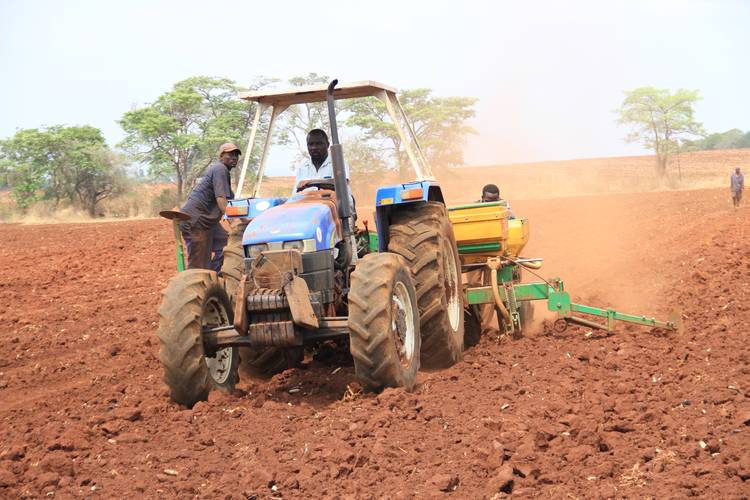
The Sunday Mail

Have you ever reflected on the importance of soil on the well-being of mankind? While not many of us have been down that road, the United Nations General Assembly’s 68th session declared December 5 as the World Soils Day.
The year 2015 has also been declared as the International Year of Soils so as to raise awareness on the importance of sustainable soil management as the basis for food security under the theme “Healthy Soils for a Healthy Life”.
There are four Social Development Goals that are closely linked to sustainable soil management and conservation that should be achieved in the year 2015. These targets include improving soil quality, reducing the total number of deaths and illnesses caused by soil pollution, combating desertification and restoring degraded land and soil.
Familiar types of soil include clay, sand and silt.
The five objectives that are expected to be achieved during the year are to raise full awareness among all stakeholders about the fundamental roles of soils for human life, promote full recognition of the crucial role of soils towards food security and nutrition, to raise awareness on climate change adaptation and mitigation, essential ecosystem services, poverty alleviation and sustainable development as well as to support effective policies and actions for the sustainable management and protection of soil resources.
The other key objective is to promote investment in sustainable soil management activities in order to ensure healthy soils for different land users and population groups as well as to strengthen initiatives in connection with the Sustainable Development Goal (SDG) process.
It was against this background that hundreds of delegates recently converged in the resort town of Victoria Falls to deliberate on how best the objectives could be met as the International Year of Soils is already in its second half.
During the deliberations, it was noted that many people do not realise the importance of soil. Taking the lead, Food and Agriculture Organisation (FAO) mentioned that the most widely recognised function of soil is its support for food production.
It is estimated that 95 percent of food is directly or indirectly produced from soil. Healthy soils supply the essential nutrients, water, oxygen and root support that food producing plants need for growth and flourish.
“Soil provides nutrients and water that are absorbed through plant roots and contribute to the regulation of water and atmospheric gases and therefore play an important role in climate regulation,’’ reads some of FAO’s key message.
If well managed, soils can play an important role in climate change mitigation by storing carbon (carbon sequestration) and decreasing greenhouse gas emissions in the atmosphere. Healthy soils are also living soils as they host a quarter of the planet’s biodiversity.
Soil play an important role in storing and filtering water. Some soils are good at holding water longer than other types. Depending on particle size and distribution, some soils can filter water by trapping pollutants and preventing them from leaching into the groundwater.
Sadly, according to the organization’s fact sheet, soils are now in danger because of expanding cities, deforestation, unsustainable land use and management practice, pollution, overgrazing as well as climate change.
The current rate of soil degradation threatened the capacity to meet the needs of future generations. Therefore the promotion of sustainable soil and land management is central to ensuring a productive food system, improved livelihoods as well as a healthy environment.
It is also critical to keep in mind that soils are a non-renewable resource whose preservation is essential for a sustainable future. Soil is infinite, its loss and degradation is not recoverable within a human lifespan.
Soils are made up of inorganic mineral particles that includes sand, silt, clay, gravel, stones and rock as well as organic matter that includes air, water and living organisms.
Man-made materials may also form part of soil.
Farmers need to understand that growing food on nutrient-impoverished soils contributes to systematic human protein-energy malnutrition because of the lack of important macro-nutrients in the human diet.
Farmers should thus be in a position to classify their soils so as to get full knowledge of its content. This will enable them to determine which type of fertilizer to apply and in what quantities. The purpose of fertilizers is to enrich soil content of micro and macronutrients.
As such, farmers need to practice Climate Smart Agriculture, an approach proposed by FAO. As part of its two pilot projects in Tanzania and Kenya, the organization selected and promoted the uptake of different practices based on experts and participatory assessments.
With 9 000 farmers in both countries, 40 percent of them being women, the farmers received training on climate-smart agriculture. 736 energy-efficient cooking stoves were adopted to reduce deforestation, 79 tree nurseries were created while 417 000 tree seedlings were planted to conserve soil and water. The pilot projects were highly successful.
The issue of soil degradation is equally important in the preservation of soil as this manifests itself in various forms such as soil erosion, sanitization, nutrient depletion, loss of soil biodiversity, soil pollution, compaction as well as loss of organic matter. Every person has got a role to play in protecting soil from degradation.
The world’s soils are under increasing pressure and the steady conversion of grassland and forestland to crop-land and grazing lands over the past centuries has resulted in historic loses of soil carbon worldwide. At the current rate of degradation, agriculture will not be possible 60 years from now as every minute, land equivalent to 40 football fields of fertile soils are being lost worldwide.
As climate change currently represents a serious threat to global food security due to the changes in temperatures and rainfall patterns, this can result in crop failure as well as loss of livestock. Zimbabwe has not been spared either.



